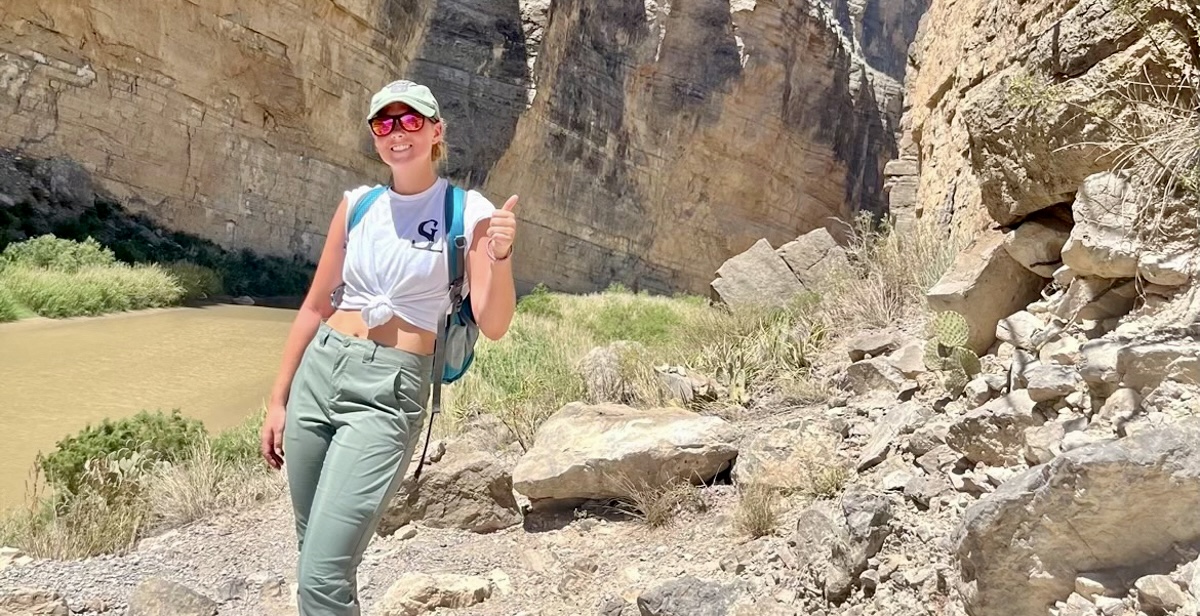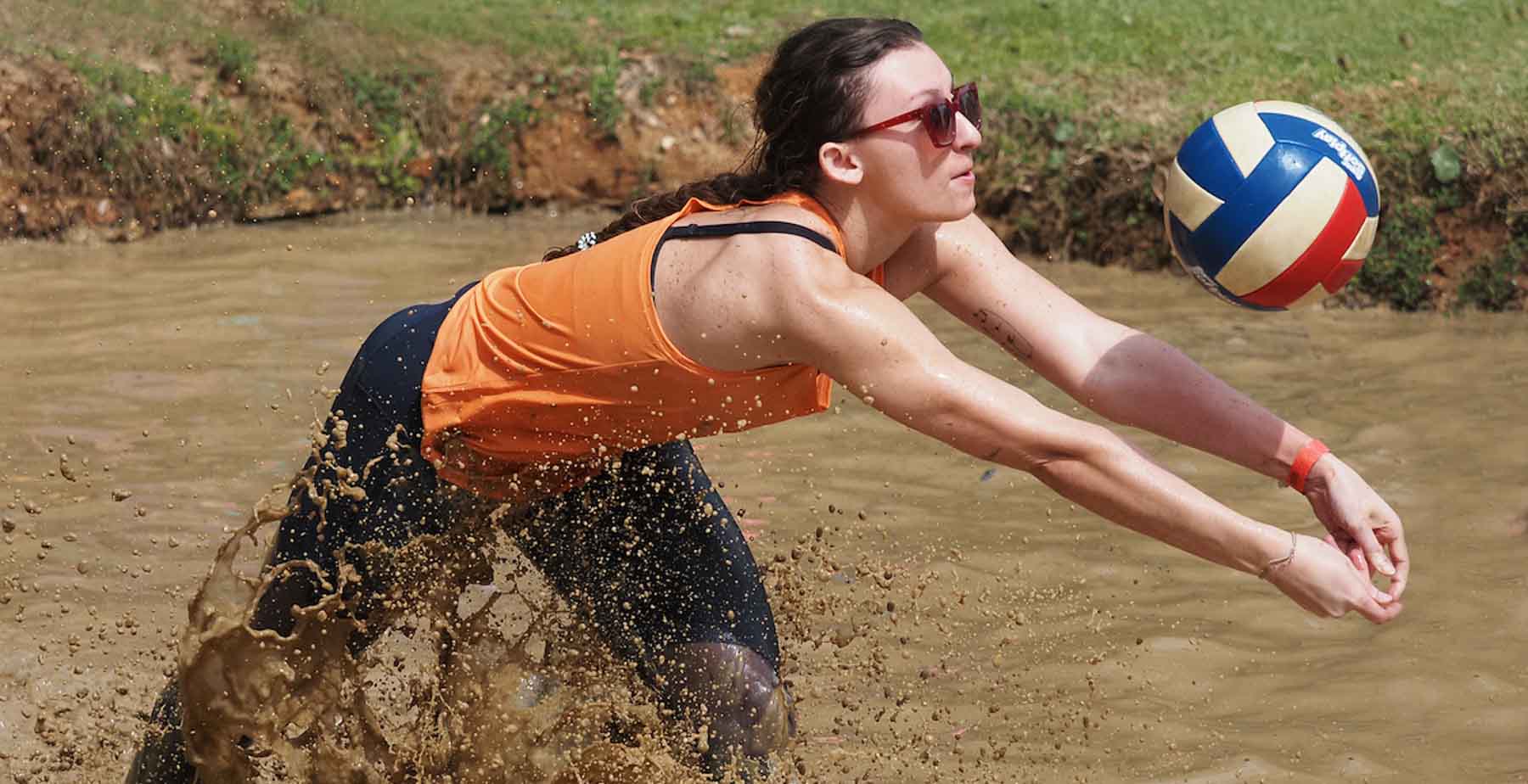Snake, Rattle and Role: Honors Student Finds Niche in Reptile Research
Posted on April 7, 2023

On hot summer nights in West Texas, with her eyes wide and heart racing, Grace Coppinger learned how to capture rattlesnakes.
She joined Dr. Jason Strickland, a biology professor at the University of South Alabama, and two graduate students on a field trip near Big Bend National Park. After sundown, they drove through the desert looking for snakes crossing the road.
Using tongs or a pole with a hook, the South researchers eased the snakes into a sack. The next day, they maneuvered the snakes into a plastic tube, then had them bite down on a plastic cup to release their venom.
“We caught way more snakes than I thought we would,” Coppinger said. “We were up into the 20s and 30s. Especially at night, it was humid and dark, and you’re sometimes dealing with venomous reptiles. It was an insane experience, doing something not everyone can do. The adrenaline rush was crazy.
“There was one night when we were out collecting scorpions. In order to find them, you shine a black light and they glow in the dark. So we’re along this cliffside in the middle of Texas, 1 a.m., and there are huge stars and the biggest night sky you’ve ever seen. I never felt so small in my life. A super cool experience.”
Back in Mobile, Coppinger has found her own niche in snake research. She collected common garter snakes – generally harmless to humans – near the nature trails on campus and extracted venom from their rear fangs for analysis. It’s a poorly understood area of study.
The Honors College student is interested in what proteins are produced in the venom of the garter snake, and how they are different from other rear-fang snakes. Also, whether female garter snakes, which are larger than males and tend to eat bigger prey, have more complexity in their venom.
The 21-year-old junior biology major hopes her work will be published in a scholarly journal such as Toxicon. She’s already been a co-author on a tree frog article by Dawn Canterbury, a former South graduate student, in Herpetological Review. She is also an undergraduate research assistant on a tick research project that is a collaboration between Strickland and Dr. Meghan Hermance in the Department of Microbiology and Immunology.
Coppinger is one of four South undergraduates nominated for a 2023 Goldwater Scholarship in science, technology, engineering or mathematics. She’s planning a career in genetic research. The Seaman’s Bethel building, home to the Honors College, is one of her favorite places on campus.
“I just love going in there and hearing about what everyone’s working on,” she said. “One of my friends is an anthropology major studying all of these interesting things. It’s just amazing, this melting pot of people.”
At South, Strickland runs a biology lab called the SSSTING Lab, which is short for Snakes, Scorpions, Spiders, Toxins, INformatics and Genomics. Coppinger took one of his genetics classes and sent him an e-mail asking about research projects.
“She was a freshman at the time, so it was great to bring her in early,” Strickland said. “As soon as we started talking, it was clear that she was smart, energetic and highly motivated. She’s a good person to have in the lab. She’s always looking to be helpful. She’s always trying to be a team player.”
Coppinger is grateful for the chance to do research as an undergraduate. She remembers Strickland offering her several research opportunities. One of them, the garter snake project, he described as “from the ground up,” requiring lots of work over several semesters.
That sounded good to her.
“In my mind, if you’re going to do something, it needs to be 100 percent,” she said. “Within the hour, I got back to him, saying please can I do this, and I will work so hard. That’s where I went, and I’m so glad I did.”
From Missouri to Mobile
Coppinger grew up outside St. Louis in Union, Missouri. During high school, she did a summer program at the University of Chicago, but chose to attend South because of the Honors College and Dauphin Island Sea Lab.
She wound up studying reptiles, rather than amphibians, which surprised her parents.
“My mother hates snakes, so at first she was kind of worried about me,” Coppinger said. “I don’t think any of us expected me to end up in this, but I’m happy to be here now.”
In Mobile, she works part-time at a local hardware store. She runs several times a week and does the occasional 5K race. She has a dog named Gator.
This summer, she will participate in Research Experience for Undergraduates, a National Science Foundation program, with the Boyce Thompson Institute at Cornell University.
Coppinger has definite plans to attend graduate school and go on to earn a Ph.D. There’s a satisfaction that comes with field work that leads to lab analysis and published results.
“I love the community that builds around research,” she said. “I love being in the lab. I like contributing to something. There are a couple of plant projects I’m interested in, using genetics, but I could see myself working with rattlesnakes or pit vipers the rest of my life.”
 Grace Coppinger on a University of South Alabama field trip last summer near Big
Bend National Park in West Texas.
Grace Coppinger on a University of South Alabama field trip last summer near Big
Bend National Park in West Texas.





